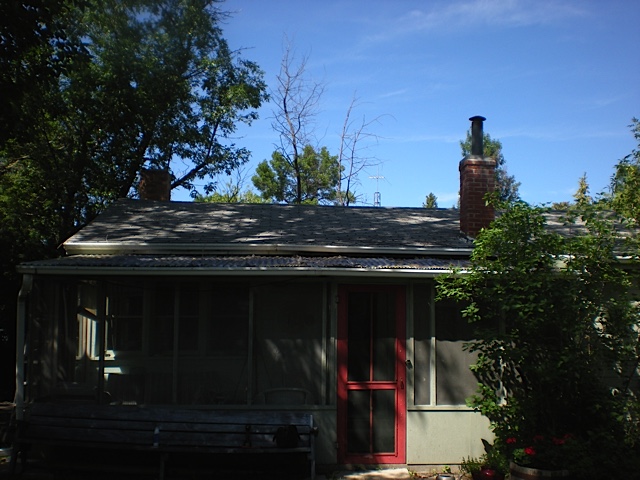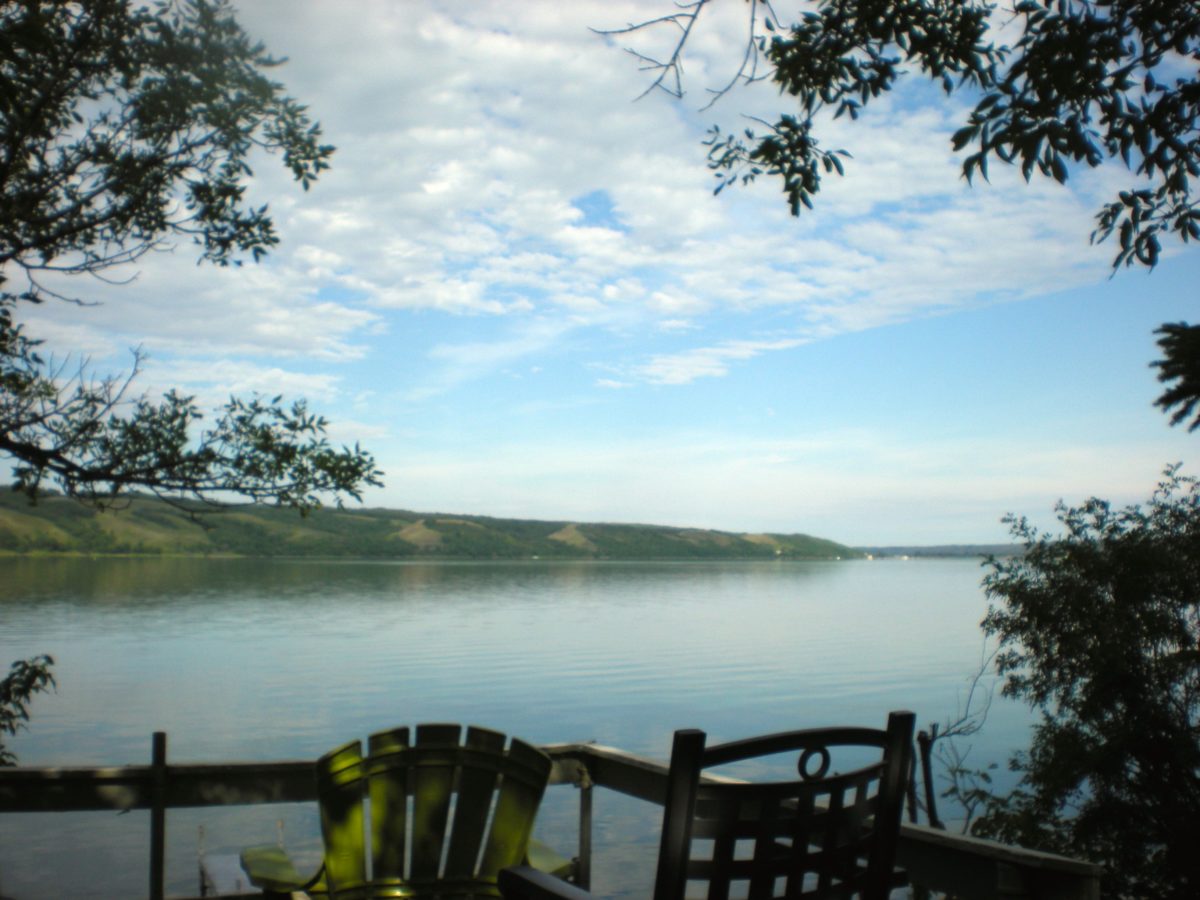This summer, I woke up to the banging of hammers and the scream of a table saw. Both lots beside our cottage began renovations to install steam showers, balconies and hot tubs in their “cabins.” Our neighbours are dentists and accountants who drive an hour from Regina over gravel roads in their brand new Audis. They refinished the hardwood floors, put up new fences, and planted bushes that require a landscaper to trim. This is a common occurrence at the cottages along the lakefront of Katepwa Lake in the Qu’appelle Valley. Now, there are few original cabins that have not been demolished or renovated. My family’s cottage is one of the last.

My great-grandparents bought the cottage in 1947. They named it Cheri-Dell, after their two children. After her husband died, my great-grandmother spent May to October out at the cottage. I never knew the woman everyone called Gram. My entire family shares their memories of her. My sister and I are the only ones with no stories to add.
My mother works for an airline so my family has been fortunate to travel all over the world. Regina has never really felt like my home. That’s why leaving for university in Fredericton wasn’t hard. Leaving the cottage for the last time was. Gram and I both made our home there.
* * *
The cottage is surrounded by bushes at the back of a deep lot and looks out over the lake. Leading to it is a path of cement stepping stones, each containing a handprint and footprint of a family member. Natalie, my sister, and I already have added our stones to the path. The rough prairie grass has consumed some of the older stones so only a finger or toe survive. Dotted along the path are wooden baskets stuffed with flowers and herbs. Gram used to nurture a garden out of the exhausted soil. It has long grown over except for a hearty section of wild rhubarb. While the adults unpack the car, Natalie and I haul lake water up to flowers in huge metal kettles, calcium coating their bottoms.
Nobody takes off their shoes when they enter the cottage. (In fact, we encourage guests not to.) Our cottage has not changed much since the ‘40s. We don’t have running hot water, so to take a bath you have to heat enough water to fill the full-sized clawfoot bathtub. Or, take a dip in the lake.


On chilly mornings, we light the little wood stove. There is a mini-television that plays VCRs – sorry, no Wi-Fi. Somehow, we all squish into two bedrooms, a lumpy hide-a-bed, and a couch in the living room at night. On the Saskatchewan summer afternoons, we all vote to buy an air conditioning next year but never get around to it. Instead, we escape to the screened-in porch. The porch gets the breeze off the lake so you don’t get heatstroke and are protected from all but the most sneaky mosquitos. When it rains, the noise under the porch’s corrugated plastic roof is deafening.
The remnants of Gram’s artistic talent is in every corner. I don’t know what affinity she had with chickens but they recurr in her artwork. Gram handmade hooked carpets of chickens. She constructed chicken tile mosaics in the kitchen sink, the fireplace hearth and the coffee table.
The kitchen chairs have elaborate scenes engraved into their backs in a Jan Brett-like style. Only a couple of these carvings involve chickens. Our family calls the outhouse The Biffy; no one can tell me why. There are two toilet seats, again, no one will tell me why, and Gram painted a chicken on the inside of both toilet seat lids.
Every spring, I risk my life teetering on the ladder to hang one of Gram’s massive hooked rugs that weighs at least 50 pounds and takes up an entire wall of the living room. Surprisingly, it features an oriental elephant with painted toenails. Every plate in the cupboard bares a chicken, each with its own personality and signed Gertie Smith on the back. A couple years ago, I dropped a chicken plate on the deck and it broke in half. That was the first time I saw my grandmother cry.
Gram’s art reflects what a colourful person she must have been. The walls of the cottage do, too. Apparently, she picked out colours based on their names, refusing to consult paint chips. One of the bedrooms and the inside of The Biffy is painted Pink Lemonade. The colour’s name is perfect. It’s exactly the colour that makes you question the chemicals in drinks these days. Gram’s signature colour (that we call Gram Green) is named Four Leaf Clover and reminds me of honeydew melon. Most of the kitchen is Gram Green. In the bathroom, she painted grapevines on the walls and ceilings. It used to freak me out when I was a kid. The exterior of the cottage is Barn Red and Gunmetal grey. No mistaking our cottage from the lake, that’s for sure.
Gram cooked bacon every morning, saving the fat to use throughout the day. My uncles rave about her pancakes cooked in bacon fat. Apparently one morning, she misplaced the pancake flipper so she whipped out the biggest spoon she had, flattened it with a meat pounder right in front of them on the counter, and managed to flip the current pancake before it burned. We still keep the flattened spoon in the utensil drawer for emergencies.
She hung soup ladles full of sunflower seeds from the eaves to attract birds. She would sit on the deck, motionless, and let chickadees eat the seeds out of her palm. We fill the ladles still, but chickadees never stay for long.
* * *
One of Gram’s paintings shows the opposite side of the valley, the modest stone church and the distant herd of cows, grazing along the farmer’s land. Untouched. That farmer finally broke this summer and sold the land to a developer. Soon, they will start construction of rental cabins, a summer camp, and massive mansions like the ones that neighbour our cottage now.
Next summer I won’t recognize my home.
I never knew Gram. I try to know her through what she left behind at the cottage. Something about it called to both of us. When I look through the yellowed guest book, I know the cottage is special to a lot of people. My uncle used to host his cast parties there. A close family friend requested he have his funeral there. My dad proposed to my mom there.
In her younger years, Gram taught at a one-room schoolhouse in rural Saskatchewan. She kept a diary of her time there that we still have. She hated it. Maybe I’m romanticizing, but I would like to think that Gram wanted to be an artist. In those days, women didn’t become artists. Not many of them became teachers, either. This summer, I thought a lot about that. Thought about how I could do anything. Thought about how the world had changed.
